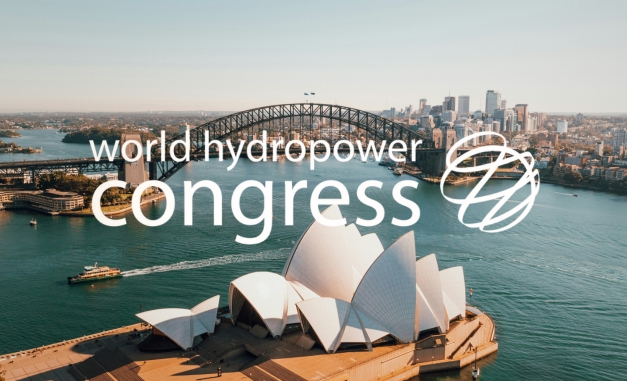Hydropower sector makes no-go commitment on World Heritage Sites, with duty of care for Protected Areas
The International Hydropower Association (IHA) – representing around 100 public and privately owned developers, operators and manufacturers – has today announced progressive and stringent safeguards for hydropower development in Protected Areas.

An historic no-go commitment on any future development in UNESCO-designated World Heritage Sites is accompanied by a duty of care requirement for hydropower companies seeking to build new projects in legally designated Protected Areas.
The new IHA commitments were made following a process of dialogue and engagement with the association’s membership – who collectively manage around a third (450 GW) of worldwide installed hydropower capacity – together with the UNESCO World Heritage Centre and the International Union for Conservation of Nature (IUCN) among other stakeholders.
The announcement was made on 6 September 2021 at the IUCN World Conservation Congress in Marseille by IHA Chief Executive Eddie Rich, which takes place on the eve of the World Hydropower Congress, to be hosted online with the Government of Costa Rica between 7-24 September.
“Hydropower can bring huge benefits as a low-carbon source of electricity, providing clean storage for solar and wind power and helping to protect energy systems against blackouts. Billions of tonnes of carbon emissions are avoided every year by using hydropower instead of fossil fuels. As with any infrastructure project, however, even the construction of a renewable energy project may bring impacts to the local environment that must be mitigated,” said Mr Rich.
“We believe that renewable energy projects in Protected Areas should meet the highest performance standards and clearly demonstrate how they offer net-benefits to the wider environment. World Heritage Sites have been inscribed on the World Heritage List and so require additional protections such as this no-go policy for hydropower to protect them for future generations.”
Under the duty of care commitment for Protected Areas, IHA’s members must implement high standards of performance and transparency when affecting Protected Areas, as well as candidate Protected Areas and corridors between Protected Areas. This should be demonstrated through a systematic application of the Hydropower Sustainability Tools or certification against the forthcoming Hydropower Sustainability Standard, to be launched on 8 September 2021.
‘The new IHA commitment is a major step forward by the hydropower industry’
Responding to the announcement, Mechtild Rössler, Director of the UNESCO World Heritage Centre, commented: “The new IHA commitment is a major step forward by the hydropower industry in ensuring that hydropower projects do not affect World Heritage sites. The new commitment is in line with the established position of the World Heritage Committee, that the construction of dams with large reservoirs within the boundaries of properties is incompatible with their World Heritage status. “We also look forward to continue our dialogue with IHA in order to ensure that through the implementation of the duty of care commitment, impacts of hydropower projects outside World Heritage sites but situated within the watershed can also be avoided.”
Dr James Dalton, Director of the IUCN Global Water Programme, commented: “Protected Areas are a part of the solution to address the unprecedented environmental crisis humanity is facing – all actors of society, including the hydropower industry, share the responsibility to protect this natural heritage for future generations.
“IHA’s commitment to respecting World Heritage Sites as no-go areas for hydropower projects is an important step toward improving the sector’s sustainability performance, and IUCN stands ready to help IHA and its members extend this commitment to all categories of Protected Areas.”
Read more about the IHA position statement and read frequently asked questions
Notes for Editors:
The 2021 World Hydropower Congress, 7-24 September, brings together industry, governments, multilateral and financial institutions, civil society and community groups to set priorities for future hydropower development. The online, free-to-access event will showcase how sustainable hydropower – the world’s largest renewable energy source – is part of the solution to climate change.
Ahead of the UN Climate Change Conference (COP26), this is an opportunity to hear how the massive roll-out of solar and wind power is dependent on the clean generation, storage and grid resilience services offered by sustainable hydropower.
The IHA commitments on Protected Areas and World Heritage Sites will be presented at a dedicated World Hydropower Congress session on 21 September, when a new IHA How-to Guide on Hydropower and Protected Areas is to be launched. The guide features a co-authored foreword by the International Union for Conservation of Nature (IUCN), the World Wildlife Fund (WWF) and The Nature Conservancy (TNC) and the UNESCO World Heritage Centre.
The World Hydropower Congress will see a range of other announcements and commitments made by and on behalf of the hydropower sector, including:
• the San José Declaration on Sustainable Hydropower committing the hydropower sector to better practice,
• the Hydropower Sustainability Standard, a new certification scheme for industry governed by the Hydropower Sustainability Council,
• a new Hydropower 2050 Report by IHA on the next 850 GW of potential capacity to meet global net zero emissions targets
• the International Forum on Pumped Storage Hydropower, co-chaired by the US Department of Energy and former Australian Prime Minister Malcolm Turnbull, will publish three new reports on the future of the world’s water batteries.
Media Contact:
Will Henley
Head of Communications
International Hydropower Association
The World Hydropower Congress Secretariat
Telephone: +44 797 423 0904
Email: will.henley@hydropower.org










